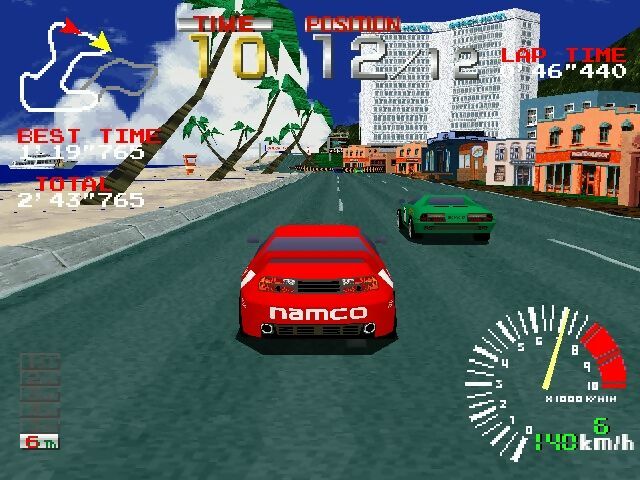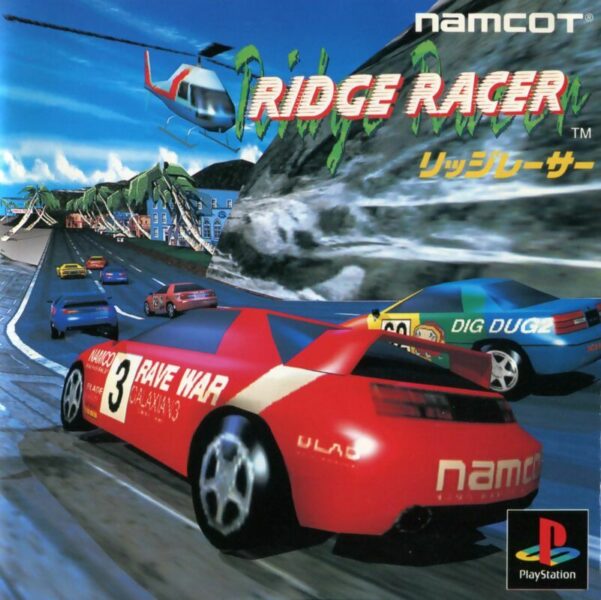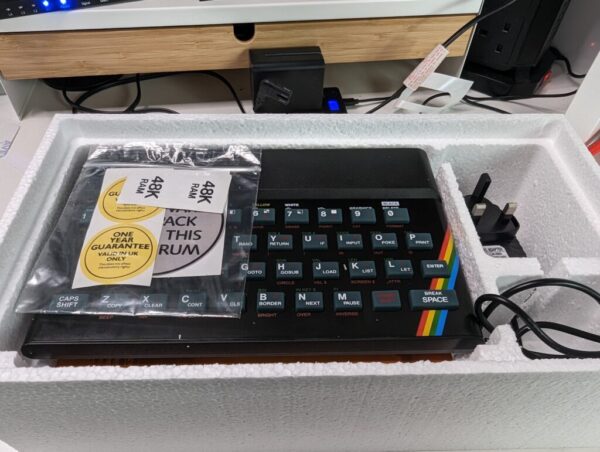
Ridge Racer was released in Japanese arcades on 30 October 1993, 30 years ago today. It was nothing short of a revolution.
The debut of Ridge Racer was a defining moment in video gaming. Released in Japanese arcades on 30 October 1993, Namco’s racer was the first arcade game to use texture-mapped 3D graphics, and it looked simply leagues ahead of anything else.
Earlier games such as Atari’s Hard Drivin’ and Sega’s Virtua Racing had dragged racing games into the world of 3D by using simple, single-coloured polygons. But Namco’s snazzy new System 22 board, introduced worldwide with Ridge Racer, allowed those polygons to have details pasted onto their surface, making for the most realistic racing game yet.
Ridge Racer's origins lay in a game called SimDrive, which Namco showed off at the JAMMA arcade show in 1992, and which later had a very limited release in Japanese arcades. It was a sequel of sorts to Namco’s 1989 arcade game Eunos Roadster Driving Simulator, and SimDrive not only pioneered Namco’s powerful System 22 architecture, but also came with a full-sized car for players to sit in – an actual Eunos Roadster (known as the Mazda MX-5 outside Japan).
SimDrive was later reworked as Ridge Racer for widespread release, with the game based on drifting around tight corners on mountain roads – something of a popular hobby in Japan at the time. There was no damage to worry about – it was simply a case of going flat out to the finish, while skidding gloriously sideways around corners.
There were various different flavours of Ridge Racer cabinet – some stand-up ones, some with triple screens, for example – but the grandest version was the legendary Ridge Racer Full Scale. Like SimDrive, it came with a full-sized Eunos Roadster for players to sit in, and the action was projected onto three huge screens in front of the car, while fans blew wind in your hair.
Only a few of these enormous machines were made, each tailor made for their arcade location, and with each one costing somewhere in the region of $250,000. You can see one in action at London’s Trocadero back in the 1990s in the video below:
Sadly, the enormous Ridge Racer Full Scale machines have gradually disappeared over the years. The last known one in the UK – and possibly the world – was dismantled a couple of years ago, and following a somewhat dramatic saga in which it suffered some appalling damage, it’s now in the hands of collectors who plan to restore it. (Tony Temple, The Arcade Blogger, has done a fascinating write-up of the story.)
Ridge Racer got some fierce competition from Sega in 1994 with the debut of Daytona USA, and the following years would see a deluge of 3D arcade racing games, each more spectacular than the last. But Ridge Racer is also synonymous with the Sony PlayStation. The home version of Ridge Racer debuted alongside the Japanese launch of the PS1 in December 1994, and it dramatically showcased the power of Sony’s system.

Whereas home ports of arcade games were previously watered-down versions of cutting-edge arcade tech, the PlayStation version seemed almost indistinguishable from its arcade cousin. In reality, some sacrifices had to be made with resolution and frame rate, but Ridge Racer began the era of the ‘arcade perfect’ home port, as the gap between the arcades and home consoles diminished at a rapid clip.
Ultimately, this rapid advance in console technology would be part of the reason why arcades themselves diminished over the coming decades, never again reaching the highs and innovations seen in the early 1990s. But then again, there was no way to recreate the sheer spectacle of Ridge Racer Full Scale in your living room, with its full-sized car controller. Thirty years ago today, the arcade hit its peak.
Read more: The bygone joy of bespoke arcade cabinets





